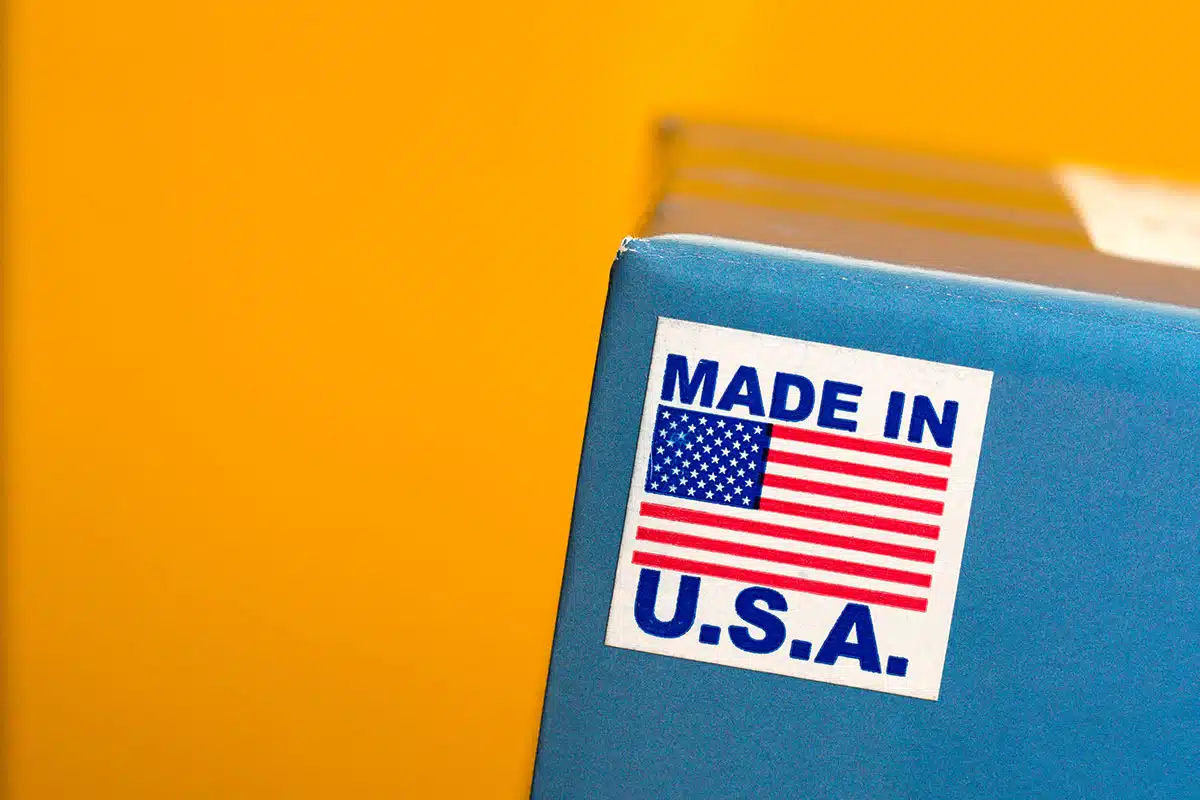A new year brings new hope, and this year is no exception. After nearly three years of a pandemic, companies and countries have learned how to manage COVID-19, and have shifted their primary focus to more pressing issues. And there are certainly plenty of other problems that manufacturers must contend with. Fortunately, companies are rallying, developing innovative solutions, and adapting quickly to a new normal that includes a less stable supply chain. Because of this, manufacturing trends for 2023 are generally positive.
Agile Supply Chains Are Becoming the Norm

With supply chain disruptions like these becoming common, many industry experts are reaching the same conclusion: What’s required now is agility, and that includes proactive contingency planning, supplier diversification, and a host of other operational changes. Manufacturers now are working to create supply chains that can bend to global pressures without breaking. This means building in redundancies, diversifying suppliers, and investing in more advanced manufacturing technologies, including digital tools that enable more effective planning and execution, and allow manufacturers to move quickly from one supplier to another.
Outsourcing of Manufacturing Will Continue
One operational change embraced by some companies is outsourcing. The move toward outsourcing began several years ago, and—as Forbes Magazine predicted recently—is likely to continue in 2023. Outsourcing allows companies to focus on their core competencies and reduce operating costs, giving them the margins they need to weather the current unpredictable manufacturing environment. Forbes cites the example of Peloton, which outsourced all its manufacturing in 2022. And while it’s true that Peloton had no choice but to act quickly—given the faltering sales of its flagship product—other companies in much healthier condition are also outsourcing some or all of their manufacturing.
For outsourcing to be successful, companies need manufacturing partners that have experience working around supply chain disruptions. Before you outsource manufacturing to a third party, make sure that company can clearly articulate how it deals with unpredictable (though no longer unexpected) disruptions.
Reshoring Continues to Be a Strong Manufacturing Trend
It’s important to note that “outsource” and “offshore” don’t mean the same thing. In fact, just as outsourcing is on the rise, so is reshoring. There are many reasons why reshoring is becoming such an attractive option. Fuel costs have risen sharply, making transportation untenable for some products. Labor costs have also risen throughout Asia, including China. At the same time, automation is bringing down the cost of manufacturing in the U.S., further eroding the savings in labor costs that offshoring used to bring.
Another problem is the perceived inferiority of foreign-made products, especially those made in China, which can be a difficult stigma to overcome. A 2015 study by the Boston Consulting Group, for example, found that both American and Chinese consumers were willing to pay a 10% premium for goods made in the USA, and this sentiment does not appear to have changed.

For all these reasons, companies are increasingly seeking out domestic manufacturing partners. Luckily for them, new legislation like the CHIPS Act is already increasing the number of factories in the U.S., making it easier to find domestic manufacturing partners. Some of these facilities are slated to be “smart factories,” which bring greater efficiency to the manufacturing process, and can help compensate for efficiencies that have been lost to supply chain disruptions.
Digital Manufacturing Trends Will Grow Stronger
Smart factories are in fact expected to become more prevalent in 2023. According to a recent Deloitte survey, 62% of manufacturers plan to invest in greater automation in 2023, both increasing efficiency and mitigating the effects of the labor shortage. On the software side, one in five manufacturers is currently developing a metaverse platform for their products and services. Other technologies that manufacturers plan to implement in order to increase operational efficiency during the next 12 months include: data analytics, artificial intelligence, advanced materials, and even quantum technology.
While 30% of manufacturers are choosing to develop the smart technologies they need in house, others are looking outside their own companies. They’re working with academic research institutions, acquiring companies that already have the desired capabilities, or partnering with technology companies.
Companies Will Move from “Just in Time” to “Just in Case”
The just-in-time manufacturing model was all about lowering inventory costs and maximizing efficiency throughout the supply chain, and for many years, it helped companies build up their bottom lines. But a just-in-time model requires a high degree of predictability. Without it, the model falls apart, leaving companies unable to fulfill orders. And indeed, supply chain disruptions have led to several high-profile instances of failed product delivery—just ask the makers of luxury cars, for one example.
The supply chain is no longer as predictable as it once was, and a return to the high stability of yore is unlikely. This is why CNBC recently reported on a trend that is picking up steam: just-in-case manufacturing. Companies that have adopted a just-in-case mentality are cushioning their supply chains. For example, they’re bringing back the concept of “safety stock,” increasing the inventory they carry on hand. This of course raises the risk of holding too much stock, which is why it’s important for companies who adopt this model to work with a manufacturing partner with expertise in inventory control.
Manufacturers Will Adapt to Materials Shortages
According to the Deloitte survey, 72% of manufacturing executives believe that the shortage of essential materials will continue to pose the biggest supply chain uncertainty in 2023. But here again, manufacturers are finding ways to cope. They’re employing something new—digital technology—and also turning to old standbys: building local capacity, and moving away from just-in-time sourcing to create redundancy in their supply chains. Deloitte lists four strategies that manufacturers are employing:
- Closer Supplier Relationships: Manufacturers are no longer taking supplier relationships for granted but monitoring and managing them carefully. They’re working with suppliers to be on the alert for possible supply hiccups, so they can quickly request an alternate transport route or switch to a comparable alternate component at the first sign of trouble.
- Supplier Diversity: After years of pursuing efficiencies by paring down the number of suppliers, manufacturers are once again choosing not to put all their eggs in one basket. They’re mitigating their risks by building redundancy into their supply chains.
- Boosting Local Capacity: To reduce supply bottlenecks and transportation headaches, some manufacturers are opening up domestic production facilities. Even global OEMs, if they have a big stake in the U.S. market, are opening factories closer to their customers. This trend is being helped along by federal incentives, most notably the Infrastructure Investment and Jobs Act, the CHIPS Act, and the IRA (Inflation Reduction Act).
- Digital Capabilities: Manufacturers are turning to sophisticated digital technologies that let them manage the entire supply chain and coordinate more effectively among suppliers. This greater supply chain visibility enables companies to spot disruptions as they’re developing and respond quickly.
Talent Retention Solutions Will Get Creative
Even though 2022 saw a record number of new hires, job openings in manufacturing still number around 800,000. Skilled labor remains difficult to source, reducing operational efficiency. Because of this, manufacturers have begun taking steps to increase their supply of workers, and these approaches are likely to become more widespread in 2023. These solutions include:
- Pay Incentives: Up to now, industries like retail and warehousing have been increasing wages faster than manufacturing has. But that looks set to change this year.
- Skill Development: One reason for the labor shortage is simply that manufacturing is a far more technical industry than it once was. To get the skilled workforce they need, manufacturers are investing in training, and forming partnerships with academic institutions in order to create talent pipelines.
DEI Initiatives: Now more than ever, manufacturers are seeking to create environments that are welcoming to both women (who currently make up less than one-third of the manufacturing workforce) and minority groups, including people with disabilities. Not only does this approach allow manufacturers to access untapped labor pools, it also creates a virtuous cycle, given that nearly 70% of U.S. job seekers in a 2020 survey said they consider a diverse workforce a positive benefit when weighing job offers.
Sustainability Will Increase
The DEI initiatives that companies are implementing dovetail nicely with another manufacturing trend: increasing consumer preference for sustainable solutions. As with DEI, sustainability trends evolve quickly, and manufacturers are dedicating more resources to keep up, not just to meet internal sustainability goals, but also to please their end users. For this reason, many companies voluntarily comply with the multiple reporting regulations, ratings, and disclosure frameworks advanced by nonprofit organizations like the IFRS Foundation and CDP.
